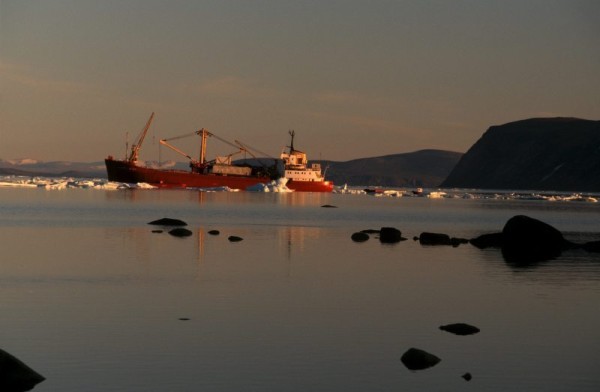Three reasons to phase out dirty heavy fuel oil from all Arctic shipping
Larger cargo carrying ships, tankers and larger cruise ships almost always use heavy fuel oil (HFO), one of the world’s dirtiest and most polluting ship fuels. In the global Arctic, these large vessels comprise only 28 per cent of vessels, but consume 75 per cent of the total annual fuel used in the region.
HFO, however, has little place in a low carbon economy and an even smaller role in the Canadian Arctic when alternatives such as diesel and Liquid Natural Gas are available.
WWF recently released a study of these alternatives and found over the long term that LNG was the best option, if sourced sustainably, for shipping from both an economic and environmental point of view.
While Canada could follow Norway’s lead and eliminate HFO off our national Arctic coasts, there is an upcoming opportunity to tackle shipping in the Arctic waters of all countries in the region. The Arctic Council’s Protection of the Arctic Marine Environment (PAME) committee meets in early February. Canada holds the current chair and plays a crucial role in developing its agenda and recommendations.
PAME continues to study HFO and provide excellent scientific analysis. But now is the time for action. The studies point to the inevitable conclusion that HFO is damaging and needs to be phased out. Canada can make its mark now by coordinating Arctic states on this important and urgent issue to remove the triple threat of HFO in the Arctic.
Here are three reasons why:
1. Spills
HFO is impossible to clean up if there is an accident. HFO emulsifies in water, whereas lighter fuels like diesel evaporate. This means that its total volume increases rapidly over a few days and spreads throughout the water column.
Coupled with its viscosity and tendencies to sink and stick to anything it touches, cleanup effort becomes insurmountable. The sticky properties are particularly problematic for seabirds and animals with fur such as polar bears, often leading to hypothermia and death.
The Arctic is unique to other regions because of lower species diversity and the species that do live there have slower than average growth and reproduction rates. As a result, oil spills in the Arctic can have longer lasting impacts than in other climates. The Exxon Valdez catastrophe is a case in point. Arctic conditions exacerbated every aspect of that accident, causing years of harm.
2. Soot
There are high levels of soot and particulate matter in the burning of HFO in ships, much higher than alternatives such as diesel and LNG. The impacts on human and some animal health are well documented, including forms of cancer.
3. Climate change
Air emissions from HFO include black carbon, which is known to affect climate. These particles absorb sunlight and heat the atmosphere by reducing the cooling effect when deposited on snow and ice.


